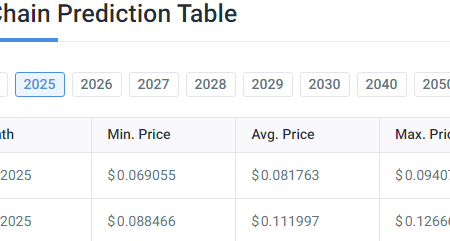Enjoy the Lightspeed newsletter on Blockworks.co today. Get news delivered straight to your inbox tomorrow. Subscribe to the Lightspeed Newsletter.
Hello!
I’m suffering from a bit of post-Olympic depression these days. The Roku TV in the Blockworks office was never used that much before I got into gaming, and it probably never will be used that much again.
The Olympic flame may have gone out, but we’re keeping it alive for one more day at Lightspeed:
Secret Cryptocurrency Placement at the Olympics
There wasn’t much cryptocurrency advertising at the Paris Olympics, but I recently heard about one interesting way cryptocurrency is being used at the Summer Games.
Decentralized weather tracking network WeatherXM deployed 40 of its Pulse weather stations around the Olympic venues. The devices, which cost $900 apiece and reward operators with tokens, tracked weather data including precise temperatures, solar radiation, and air pressure near where athletes competed.
For example, fans watching the men’s rugby match between Australia and Samoa at the Stade de France could see one of these devices near the corner of the field.

The installation came about when Yannis Pitsiladis, a professor and member of the International Olympic Committee’s Medical and Scientific Commission, partnered with WeatherXM and his research company Humantelemetrics, Thanos Daskalopoulos, WeatherXM’s head of business development, told me. Humantelemetrics acquired 40 weather stations and will now receive token fees for participating in the network.
In a statement, Pitsiladis explained that the sensors would be used to monitor “microclimates” at sporting events to ensure the safety of athletes and spectators in “extreme environmental conditions.” So perhaps WeatherXM stations could offer more accurate monitoring of thunderstorms or extreme heat.
Daskalopoulos said that from WeatherXM’s perspective, what he calls “hyperlocal” weather data — the kind collected during the Olympics — can help evaluate the performance of different athletes in different weather conditions, as well as help event organizers make more informed decisions based on weather forecasts.
Newsletter
Subscribe to the Lightspeed Newsletter
WeatherXM is an upstart in DePIN, or decentralized physical infrastructure, which allows people to deploy their own devices as part of infrastructure networks that are incentivized using crypto tokens. One popular example is Helium, which runs a decentralized Internet of Things (IoT) network using “miners” that pay out rewards in Solana-based tokens.
Some WeatherXM stations use the Helium IoT network, although the Pulse stations that Pitsiladis and his company acquired do not, according to a WeatherXM researcher. WeatherXM’s WXM token is based on Ethereum.
One question all DePIN projects need to consider is whether they can find a source of demand to make running network nodes tokenomically feasible. Daskalopoulos told me that WeatherXM is currently focused on B2B demand and is preparing to launch an API platform in the fourth quarter of this year. WeatherXM is currently running pilots in “energy, shipping port infrastructure, agriculture, and insurance,” and is in talks with weather and climate AI companies, Daskalopoulos said.
Plus, as we know, the company’s business is connected with the Olympics.
The International Federation of Sports Medicine (FIMS), which is affiliated with the IOC, is the third partner in the deal between WeatherXM and Humantelemetrics, according to Pitsiladis. WeatherXM has granted Humantelemetrics a research license to access the data, but its relationship with FIMS is still under review, Daskalopoulos said.
Data and information on how WeatherXM sensors were used during the Olympics will be published in an upcoming report, Andriyukh, a pseudonymous marketing executive, told me.
– Jack Cuban
Zero in
And here is Camino.

According to DeFiLlama, the lending protocol has become the second-largest Solana DeFi project by total value locked.
Part of Kamino’s recent surge in usage is due to an incentive program tied to PayPal’s PYUSD stablecoin. Those who supply the token to the platform earn 18.58% per annum, according to Kamino’s website.
Of the approximately 705 million PYUSD tokens in circulation, about 250 million are stored on Kamino.
– Jack Cuban
Pulse
On Friday, no-code token launcher pump.fun announced that token creation will soon be free. Instead of paying $2, the cost is being passed on to the first poor soul who buys the coin. And for developers who manage to complete the bonding curve, there’s a nice little reward: 0.5 SOL (~$80). This payout comes from pump.fun’s reduced migration fee, which is now 1.5 SOL, down from 2 SOL. So there’s an incentive whether the developer held the coin or not — or still does.
Crypto Twitter, always skeptical, couldn’t help but chime in. @anon_rip lamented, “I don’t see how this system can’t be used by people buying up their own tokens 100 times to make 50 SOL,” while @yogurt_eth added, “Great, now the coin hyperinflation will continue as devs do their best to mint hundreds of coins a day in hopes of making $80.”
One user noted that shortly after the switch, only 0.12% of newly issued tokens were transferred to Raydium.
But hey, some are in chaos. “This is great. Incentives are good. This will attract more users and give them incentive to create more,” @remy_bull noted. However, others aren’t buying it. @kingggwhite criticized, “How can this be a win? It incentivizes people to create a lot more garbage in the hopes that something will stick — terrible idea.” Meanwhile, @RyomenVentures asked, “Wouldn’t this increase the token supply tenfold as all the brokers try to get their 0.5 SOL?”
Pump.fun’s gamble could either pay off or flood the market with (even more) junk. As @GeorgeHristov7 put it, it’s “the greatest casino on earth.”
– Jeffrey Albus
One good DM
Message from Rob Hadick, General Partner in Dragonfly:

























